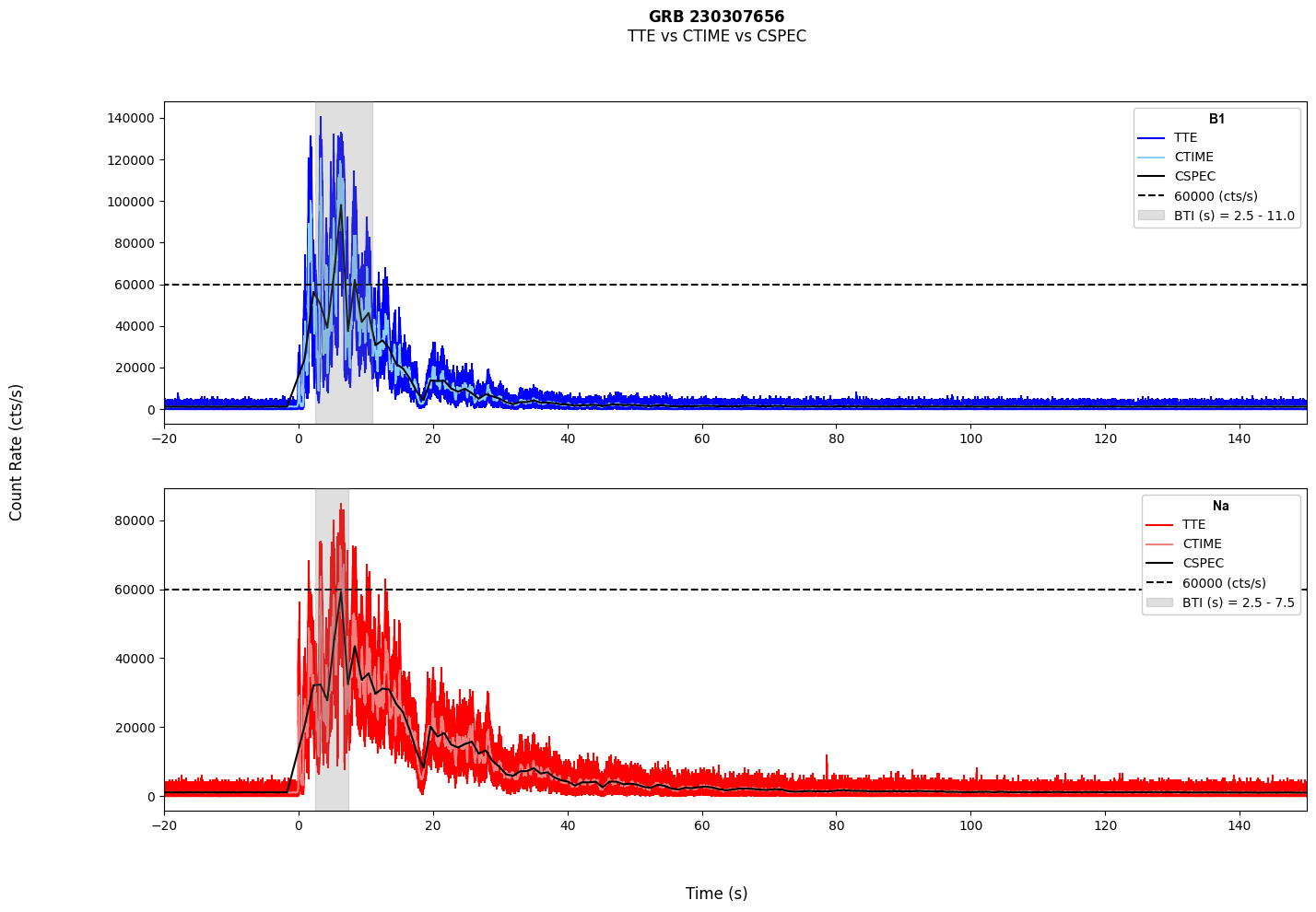Caveats About Analyzing GRB 230307A Data
Before starting data analysis, Fermi users should be aware of several important caveats with the GBM data for this burst.
GBM
The Fermi Gamma-ray Burst Monitor data for GRB 230307A has a period of bad time intervals, affecting all data types. At particularly high rates the TTE data has data loss due to the bandwidth limit between the instrument and the spacecraft. CTIME and CSPEC data experience deadtime but do not experience similar losses due to electronics bandwidth. However, at particularly high rates both CTIME and CSPEC are affected by pulse pile-up, which will distort the spectra (see https://arxiv.org/abs/2303.14172). For CTIME and CSPEC, pulse pile-up occurs for GRB pulses during the time interval of 2.5-11.0 seconds for the BGO detector B1 and the interval 2.5-7.5 seconds for the NaI detector Na, with T0 referenced to the GBM trigger time. The TTE losses happen within these time intervals, with packet losses for high-rate GRB pulses between 3 to 7 seconds. We recommend exclusion of these time intervals for GBM analysis of this burst, as well as caution in using bins adjacent to these selections.
Additionally, due to the orientation of the burst, we recommend only using BGO detector B1 and NaI detector Na for analysis of this burst. All the other detectors either have >60 degree source angles or are blocked by the spacecraft itself.

